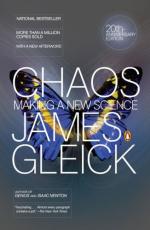
|
| Name: _________________________ | Period: ___________________ |
This quiz consists of 5 multiple choice and 5 short answer questions through chapters 7-8.
Multiple Choice Questions
1. Where was James Yorke born?
(a) Flagstaff, Arizona.
(b) Cheyenne, Wyoming.
(c) Plainfield, New Jersey.
(d) Portland, Oregon.
2. According to the author, "to play the chaos game quickly, you need a computer with a graphics screen and a random number generator, but in principle a sheet of paper and" what will work as well?
(a) A pair of dice.
(b) A deck of cards.
(c) A compass.
(d) A coin.
3. From what institution did Harry L. Swinney earn his Ph.D.?
(a) Johns Hopkins University.
(b) The University of Bonn.
(c) The University of Illinois.
(d) Caltech.
4. How old was Mitchell Feigenbaum when he was offered a post at the Los Alamos National Laboratory?
(a) 35.
(b) 22.
(c) 27.
(d) 29.
5. What book did Michael Barnsley publish in 1988?
(a) Fractals Everywhere.
(b) Deterministic Nonperiodic Flow.
(c) The Structure of Scientific Revolutions.
(d) Physical Review Letters.
Short Answer Questions
1. Who said that calling the study of chaos a nonlinear science was akin to calling zoology "the study of nonelephant animals" in Chapter 3, "Life's Ups and Downs"?
2. What refers to a rough or fragmented geometric shape that can be split into parts, each of which is a reduced-size copy of the whole?
3. In physics and systems theory, what states that, for all linear systems, the net response at a given place and time caused by two or more stimuli is the sum of the responses which would have been caused by each stimulus individually?
4. What paper did James Yorke publish in 1975 concerning chaos?
5. At what institution did Albert Libchaber become a professor of physics in 1991?
|
This section contains 284 words (approx. 1 page at 300 words per page) |

|




